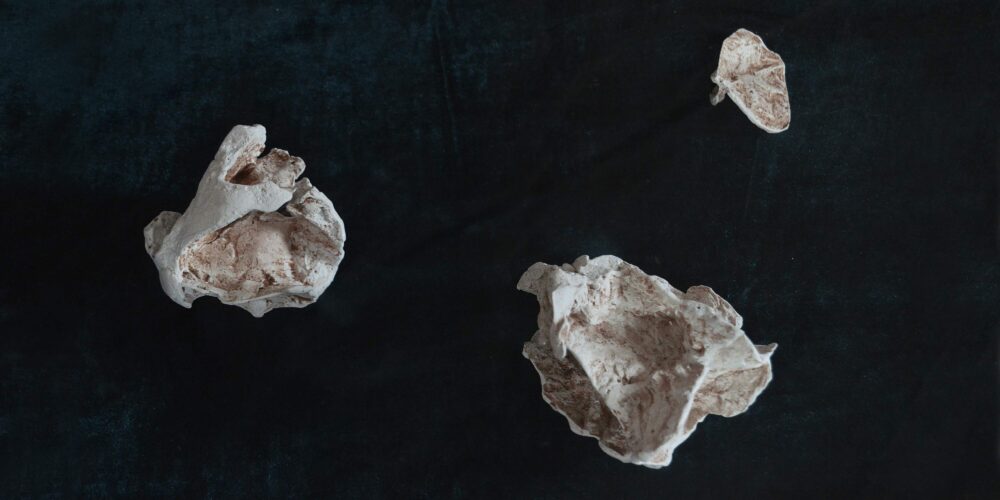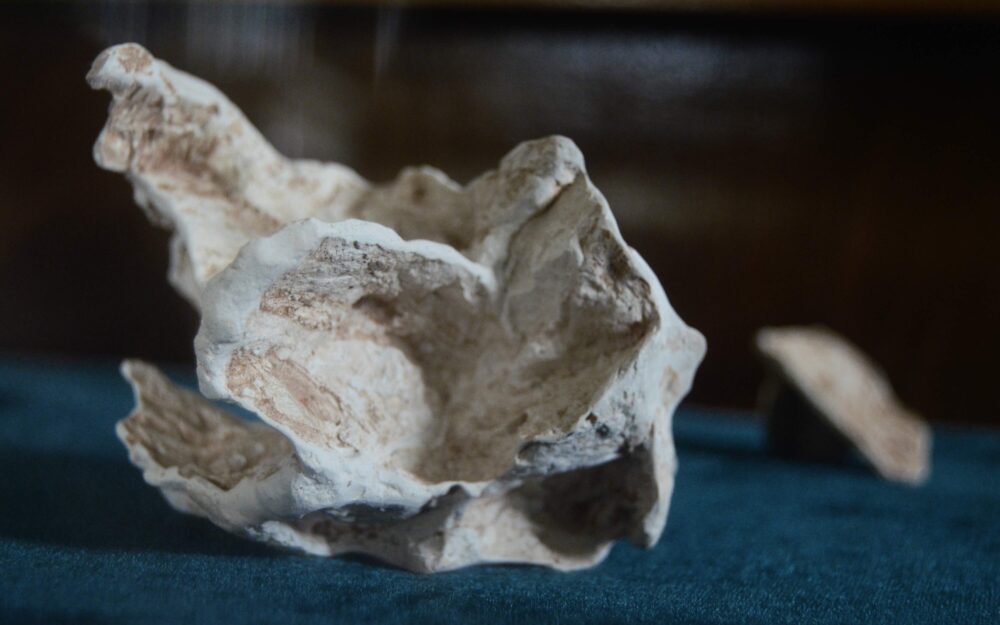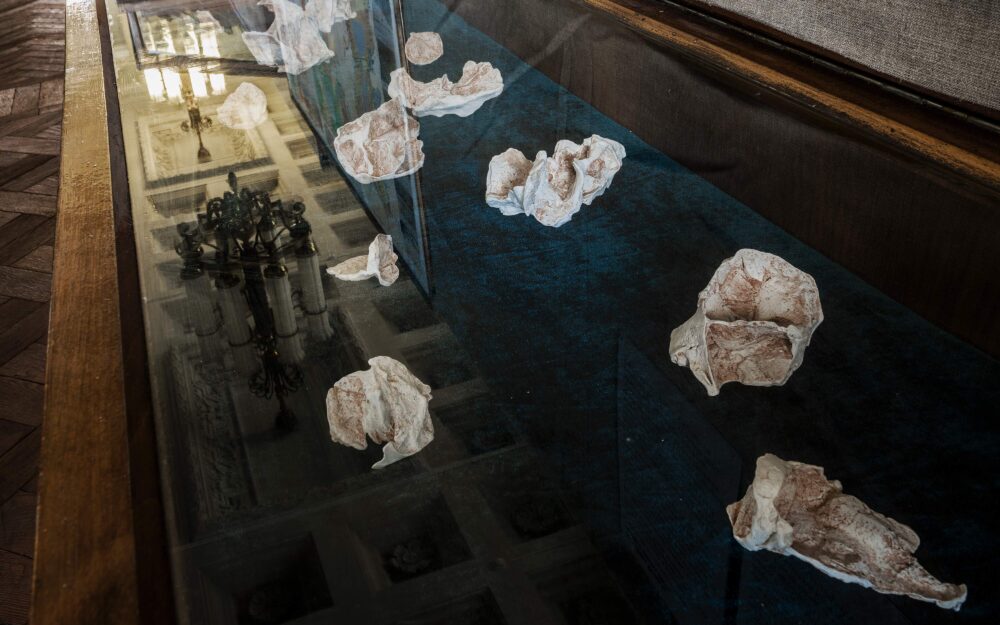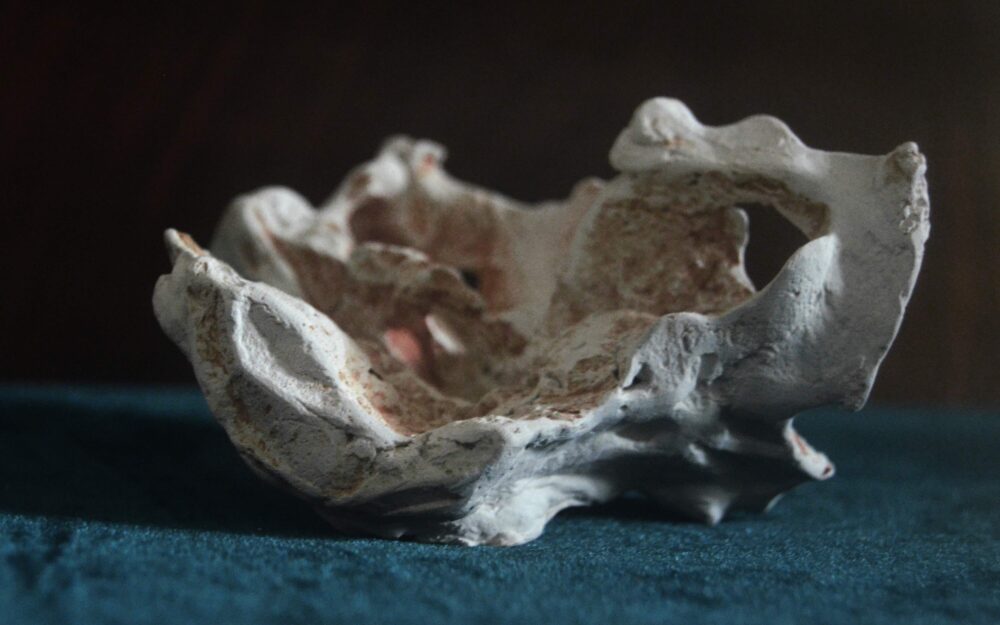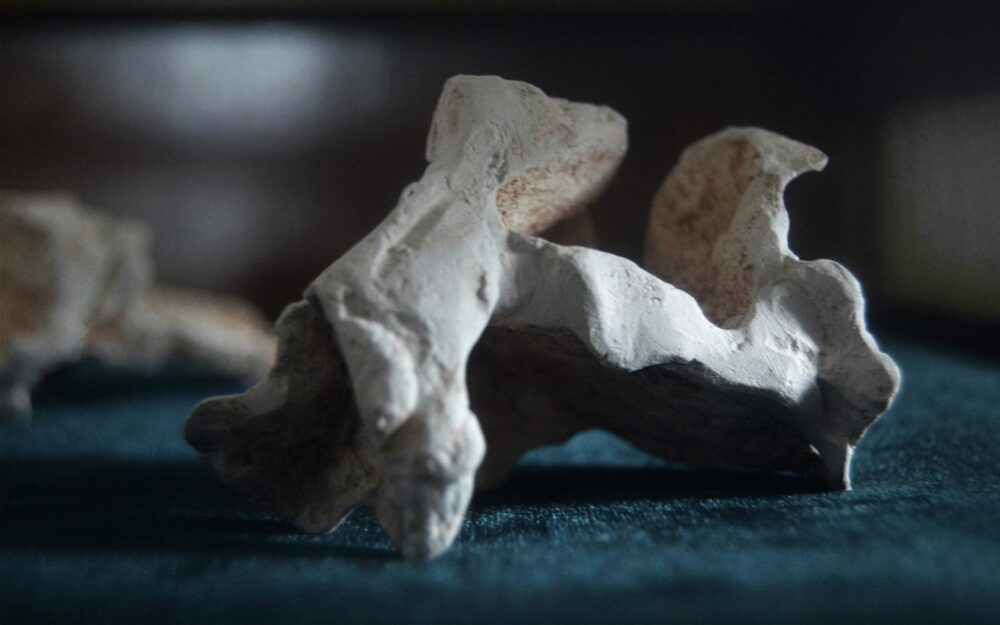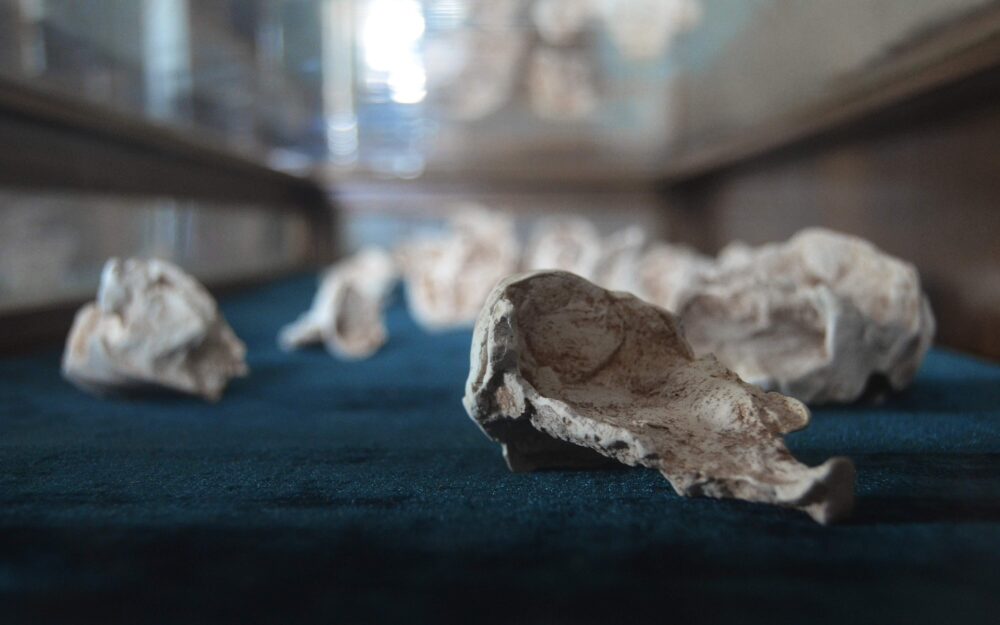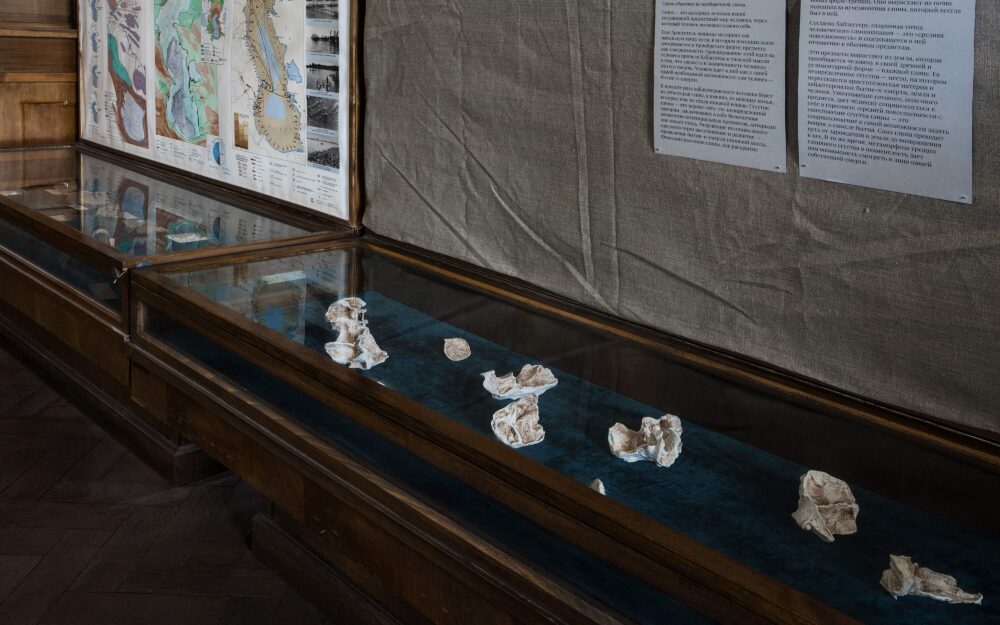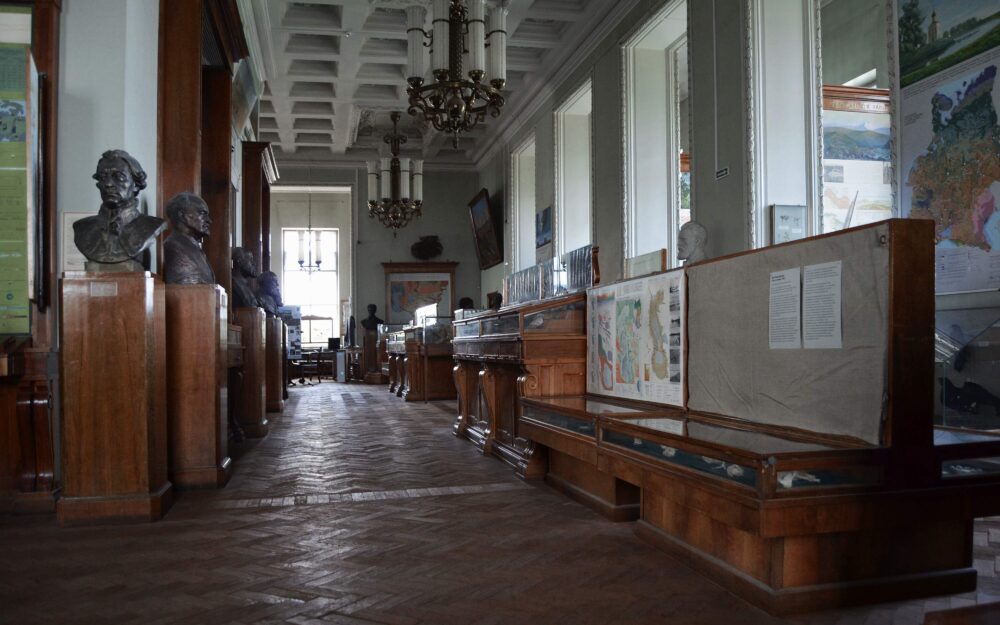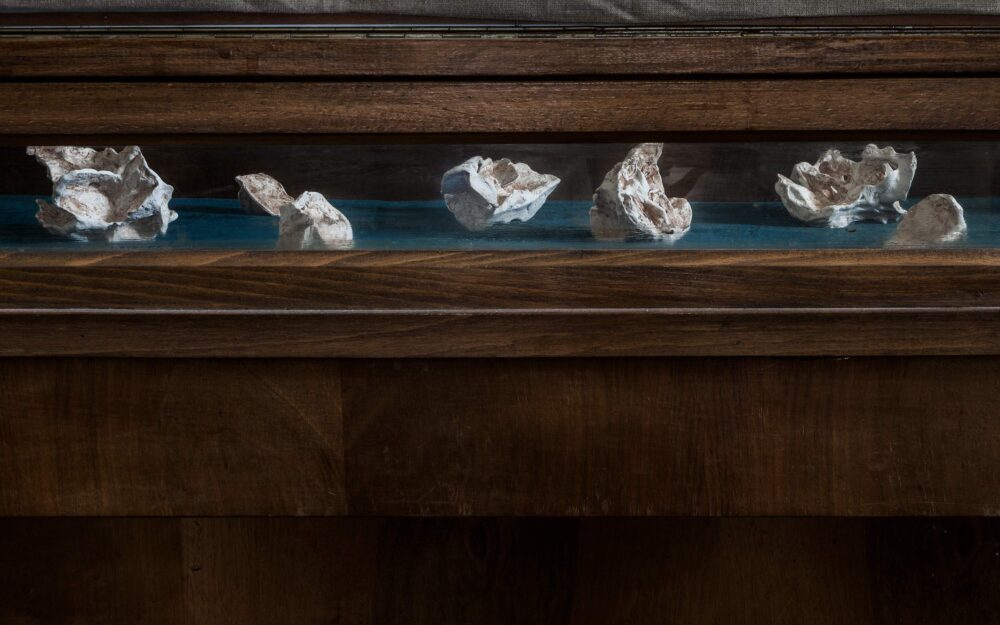In ancient times Aristotle viewed material (matter) as the starting point of the path on which the potential hidden in the material is actualized and gets a form.[1] The projection of this idea on a human being brought Heidegger to the frightful idea that the maturity and completeness of a human is her/his death. A human (or “Dasein”), so long as it is, already is constantly its “not-yet,”[2] and therefore it is always “its end.”[3] A human being exposes herself/himself as Being-toward-death. However, so long as she/he is, her/his own death remains inaccessible to reflection.[4]
In this project, the role of Aristotle’s object and the Heidegger’s human is taken by the raw clay, its fuzzy clods, which have not yet become any thing. A clot of clay is the first some-thing of indefinite matter, containing an infinite number of potential objects that it can become. The destruction of a potential object through drying and breaking is the manifestation of the being-towards-death of the clay mass. The conjoining of clay fragments with a gypsum mortar which fixes the fractures and the subsequent dissolution of the initially wet clod in water leads to the emergence of new forms-cracks, where each one reveals only one of the many potential images if desctruction. The sculptures grow out of the clay’s potential of disappearance, which has always been in it, turning the voidness of the image of disappearance into a bone frame that holds the voidness integrity of the body.
Resorting to everyday things, i.e. to what is ready-to-hand, is, as Heidegger said, a fundamental step in studying a human as Dasein, which is, in its own turn, a central element in investigation of the answer to the question about the meaning of Being[5]. Clay is a material that has been creating the objective world of humans since time immemorial. Objects grow out of the earth[6], which is associated with humans in its ancient form — wet clay. Its indefinite blobs are the infancy of objects, the place where Aristotelian matter and Heidegger’s being-to-death, earth and human, intersect. The clay itself goes from being born in the moisture of the earth to returning to the earth in the form of water. At the same time, the metamorphosis of cracks in the clay blob into a fossil gives us the opportunity to look for a moment into the face of our own death.
Gypsum forms-cracks store on their surface images of descruction of clay clods, consisting of small pits, potholes and crumbly lumps. In these reliefs, the sculptures hold the smallest particles of clay mass, which, at the time, like a form-flesh firmly fused with counter-forms-bones and left its color trace even after complete dissolution.
References
| ↑1. | Arist. Met. 1032а19–22: “All things which are generated naturally or artificially have matter; for it is possible for each one of them both to be and not to be, and this possibility is the matter in each individual thing” (Aristotle 1933, 1989. Aristotle in 23 Volumes, Vols. 17, 18. Trans. by H. Tredennick. Cambridge, MA: Harvard University Press; London: Heinemann). |
|---|---|
| ↑2. | Heidegger, M. (1962) Being and Time. Trans. from the German by J. Macquarrie & E. Robinson. Oxford: Blackwell. P. 288: “[…] as long as any Dasein is, it too is already its ‘not-yet’”. |
| ↑3. | Ibid. P. 289: “[…] just as Dasein is […] ‘not-yet’ constantly as long as it is, it is already its end too. The ‘ending’ which we have in view when we speak of death, does not signify Dasein’s Being-at-an-end [Zu-Ende-sein], but a Being-towards-the-end [Sein zum Ende] of this entity. Death is a way to be, which Dasein takes over as soon as it is”. |
| ↑4. | Ibid. P. 304: “Factically, Dasein maintains itself proximally and for the most part in an inauthentic Being-towards-death. How is the ontological possibility of an authentic Being-towards-death to be characterized ‘Objectively’, if, in the end, Dasein never comports itself authentically towards its end, or if, in accordance with its very meaning, this authentic Being must remain hidden from the Others?”. |
| ↑5. | Ibid. P. 231, 96: “What we are seeking is the answer to the question about the meaning of Being in general, and, prior to that, the possibility of working out in a radical manner this basic question of all ontology. But to lay bare the horizon within which something like Being in general becomes intelligible, is tantamount to clarifying the possibility of having any understanding of Being at all-an understanding which itself belongs to the constitution of the entity called Dasein”; “[…] which entities shall be taken as our preliminary theme and established as the pre-phenomenal basis for our study[?] One may answer: ‘Things’.” |
| ↑6. | Heidegger, M. (2002) The Origin of the Work of Art. In Off the Beaten Track, ed. and trans. from the German by J. Young and K. Heynes. Cambridge: Cambridge University Press. P. 14: “This equipment belongs to the earth […] From out of this protected belonging [to the earth — M.-S. Zh.] the equipment itself rises to its resting-within-itself”. |
